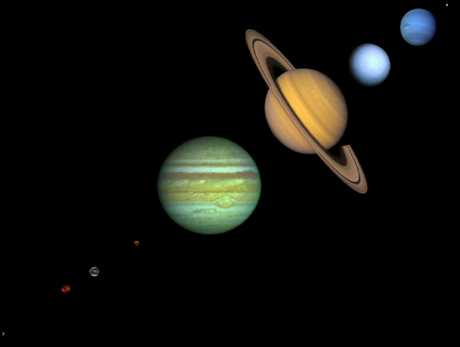
The subject of planetary exploration - much of it relying exclusively or largely on remote sensing - has, since the space age, become one of incredible and vast accomplishments in which huge amounts of data have now accumulated. It is, regrettably, impractical owing to the limitations of Web space allotted to this Tutorial to go into these fascinating results in the detail that this writer (NMS) - a onetime planetologist before entering the field of terrestrial remote sensing - would love to devote. Even so, this Section will prove to be by far the longest in the Series. The intention is to provide a thumbnail view of the major missions to the planets but with the restriction that only surface images will be shown - usually no more than 2 or 3 representative of each mission. Despite the importance of learning about planetary atmospheres (Venus, Mars, the outer planets [Jupiter, Saturn, Uranus, and Neptune], and several satellites such as Neptune's Triton), we will not say much about the results of remote sensing of these gaseous envelopes.
There are many sources of additional images and descriptive information. Among the best of these currently online is a replication of Chapter 5: Planetary Geology, by James Bell, Bruce Campbell, and Mark Robinson, in the 3rd Edition of the Manual of Remote Sensing: Earth Sciences Volume, 1996 http://marswatch.tn.cornell.edu/rsm.html. This lengthy and detailed review is built around remote sensing approaches to planetary exploration. Its one drawback is a sparsity of images (compared with this Section 19 overview). Another site worth visiting is the general Home Page of the Jet Propulsion Laboratory (http://www.jpl.nasa.gov) where you can get addresses to visit other sites dealing with both terrestrial and planetary space programs. JPL has recently selected choice images of the planet from various missions in a special Web site called the Planetary Photojournal which is accessed on http://photojournal.wr.usgs.gov/. Some images used in this Section come from that source; others are resident there for your inspection. Another NASA source is the National Space Science Data Center (http://nssdc.gsfc.nasa.gov/image/planetary. Two other exceptional Home Pages are The Nine Planets, by Bill Arnett of the Lunar and Planetary Laboratory, University of Arizona (http://seds.lpl.arizona.edu/ nineplanets/nineplanets) and Views of the Solar System, by C.J..Hamilton of the Los Alamos National Laboratory (http://bang.lanl.gov/solarsys/). Books that offer extended treatment of planetary remote sensing include the aforementioned one by Billy Glass of the University of Delaware, and a now out-of-print text by this Tutorial's author (N.M. Short, Planetary Geology, 1975, Prentice-Hall Publ.), still in libraries. More recent are Planetary Landscapes by R. Greeley, 1985, Allen & Unwin, and Exploring the Planets by W.K. Hamblin and E.H. Christiansen, MacMillan, 1990.

Then, consult the Table below which summarizes the principal characteristics and properties of the 9 planets (they are listed top to bottom in the same sequence as those shown from left to right in the above illustration). To simplify, names of the principal satellites orbiting some of these planets are not inserted in the Table but are covered in a listing below the Table proper.
| PLANETARY BODY | DISTANCE FROM SUN (AU) | ORBITAL PERIOD (yrs) | ROTATIONAL PERIOD (days) | DIAMETER (km) | DENSITY (gm/cm)3 | NUMBER OF SATELLITES | |
| Mercury | 0.387 | 0.24 | 58.6 | 4880 | 5.44 | 0 | |
| Venus | 0.723 | 0.62 | 243R | 12105 | 5.25 | 0 | |
| Earth | 1.000 | 1.00 | 1.00 | 12757 | 5.52 | 1 | |
| Mars | 1.524 | 1.88 | 1.03 | 6786 | 3.93 | 2 | |
| Jupiter | 5.203 | 11.86 | 0.41 | 143797 | 1.34 | 16 | |
| Saturn | 9.539 | 29.46 | 0.43 | 120659 | 0.70 | 17 | |
| Uranus | 19.18 | 84.01 | 0.72 | 51121 | 1.28 | 15 | |
| Neptune | 30.07 | 164.80 | 0.73 | 49560 | 1.64 | 3 | |
| Pluto | 39.44 | 247.68 | 6.4 | 2288 | 2.06 | 1 |
Names of Principal Satellites:
Code 935, Goddard Space Flight Center, NASA
Written by: Nicholas M. Short, Sr. email: nmshort@epix.net
and
Jon Robinson email: Jon.W.Robinson.1@gsfc.nasa.gov
Webmaster: Bill Dickinson Jr. email: rstwebmaster@gsti.com
Web Production: Christiane Robinson, Terri Ho and Nannette Fekete
Updated: 1999.03.15.